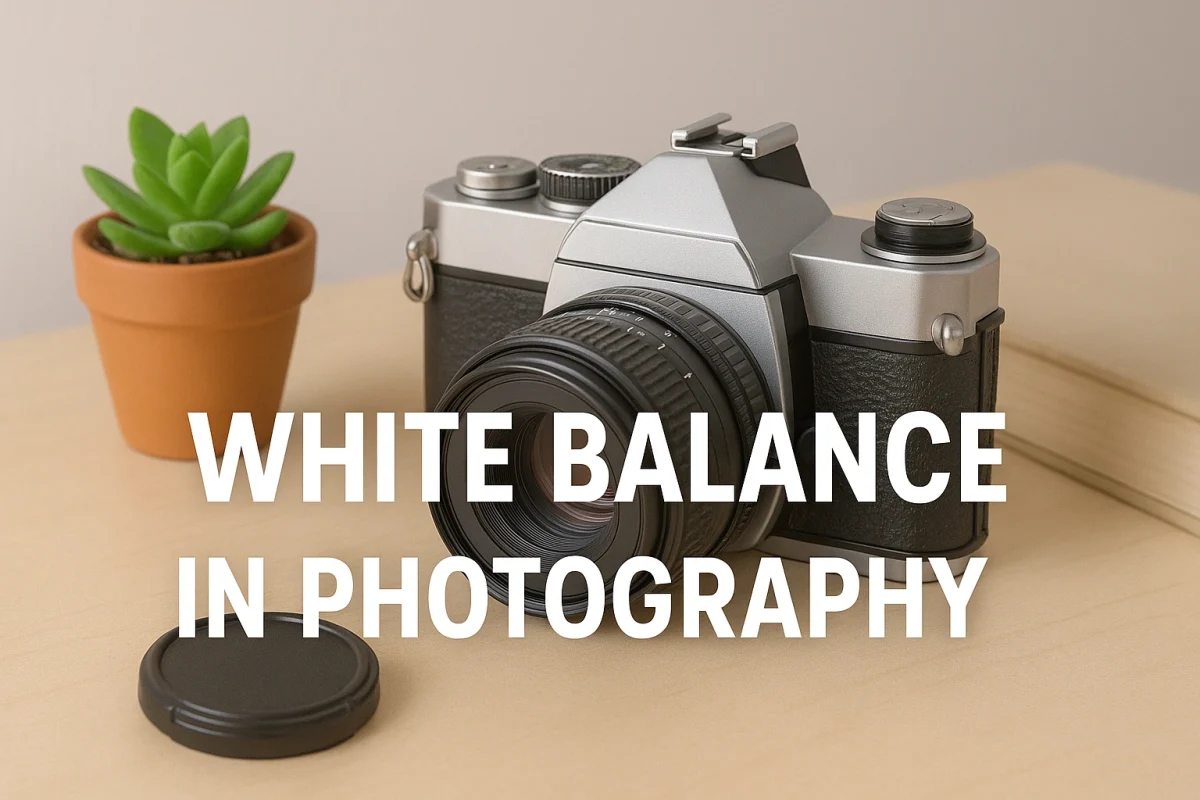Why White Balance Matters
If a photo appears too blue or too orange, it often results from incorrect white balance. This camera setting adjusts color temperature to ensure colors appear realistic. Correct white balance allows whites to look white and other tones to remain accurate, preserving a natural appearance. When the balance is off, skin tones may look unnatural, and overall images can appear too warm or cool.
You can control white balance directly in your camera or during post-processing. Understanding how it works helps you produce consistent, true-to-life photos under various lighting conditions.
What Is White Balance?
White balance is a camera function that compensates for the color characteristics of different light sources, ensuring that white objects appear white in photos. Human eyes automatically adjust to changing light conditions, but cameras require manual or automatic adjustment.
Light varies in color temperature. For instance:
- Candlelight produces a warm, yellowish tone.
- Cloudy light tends to be cool and bluish.
White balance tells your camera what type of light you’re working with so it can render colors accurately. Proper balance keeps whites neutral and other tones consistent, from skin to sky.
Understanding Color Temperature
Color temperature describes the warmth or coolness of light and is measured in Kelvin (K). Lower values represent warm tones, while higher values indicate cool tones.
Common color temperature ranges:
- 1,000–2,000K: Candlelight (very warm, orange)
- 3,000K: Tungsten bulbs (soft yellow indoor light)
- 4,000K: Fluorescent lighting (neutral to slightly cool)
- 5,000–5,500K: Daylight (balanced and bright)
- 6,000–6,500K: Cloudy sky (cool and bluish)
- 7,000K+: Shade or snow (very blue and cold)
Knowing these ranges helps you adjust settings based on your environment, maintaining natural color tones in your photos.
Types of White Balance Presets
Modern cameras provide several white balance presets that match common lighting scenarios. Each preset corrects color temperature so that whites and other colors appear accurate.
- Auto White Balance (AWB) – Detects and adjusts colors automatically; effective in most conditions but less reliable with mixed lighting.
- Daylight/Sunny – Ideal for clear, sunny conditions (5200–5500K); keeps tones neutral.
- Cloudy – Adds warmth to balance the coolness of overcast skies.
- Shade – Warms up blue-tinted light found in shaded areas (around 7000K).
- Tungsten (Incandescent) – Adds cool tones to correct warm indoor lighting (2800–3200K).
- Fluorescent – Adds magenta or warmth to offset greenish light from fluorescent bulbs.
- Flash – Slightly warms flash-lit photos to restore natural tones.
- Custom/Kelvin (K) – Allows manual adjustment using a gray or white reference card or a specific Kelvin value.
Manual White Balance Settings
When preset options don’t match the lighting, manual adjustment offers more control.
1. Custom White Balance:
- Use a white or gray card in your lighting setup.
- Photograph the card and set it as your white reference.
- The camera will adjust future shots based on that reference.
2. Kelvin (K) Adjustment:
Manually set the desired color temperature using Kelvin values.
- 3200K: Warm indoor light
- 5500K: Neutral daylight
- 6500K+: Cool shaded light
This method is useful in studios or consistent lighting setups, offering precision and repeatability.
White Balance in Post-Processing
If the white balance isn’t perfect in-camera, editing software can help correct it—especially when shooting in RAW format. RAW files store all color data, allowing flexible adjustments without loss of quality.
Steps to correct white balance in editing tools:
- Use the White Balance Eyedropper: Click a neutral white or gray area to auto-correct colors.
- Adjust Temperature and Tint Sliders: Move toward blue for cooler tones or yellow for warmer tones; fine-tune tint to fix green or magenta shifts.
- Compare before and after edits to ensure a natural look.
Common White Balance Mistakes and Fixes
- Overusing Auto White Balance: Use manual or custom settings for mixed or colored lighting.
- Ignoring Lighting Types: Identify and control light sources to prevent color inconsistencies.
- Forgetting to Adjust Between Locations: Update settings when moving from indoor to outdoor scenes.
- Over-correcting in Editing: Adjust gradually to maintain a realistic look.
- Skipping a Gray Card: Always use a reference when color accuracy is critical.
- Shooting JPEG Instead of RAW: RAW provides greater flexibility for later adjustments.
Pro Tips for Accurate White Balance
- Shoot in RAW: Enables full correction flexibility in post-processing.
- Use a Gray Card: Ensures consistent, neutral color references.
- Observe Light Sources: Notice whether light is warm or cool before adjusting.
- Use Presets as a Starting Point: Fine-tune further as needed.
- Bracket Shots: Capture multiple versions with different white balance settings for comparison.
- Watch the Histogram: Detect subtle shifts in color balance.
- Apply Creativity: Adjust white balance intentionally to enhance mood—cooler for winter scenes or warmer for sunsets.
Conclusion
White balance in photography ensures that colors remain true under any lighting condition. By understanding color temperature and using camera presets, custom settings, or post-processing tools, you can maintain accurate, natural tones. Consistent practice and attention to light sources help you capture photos that reflect reality while maintaining artistic control.

